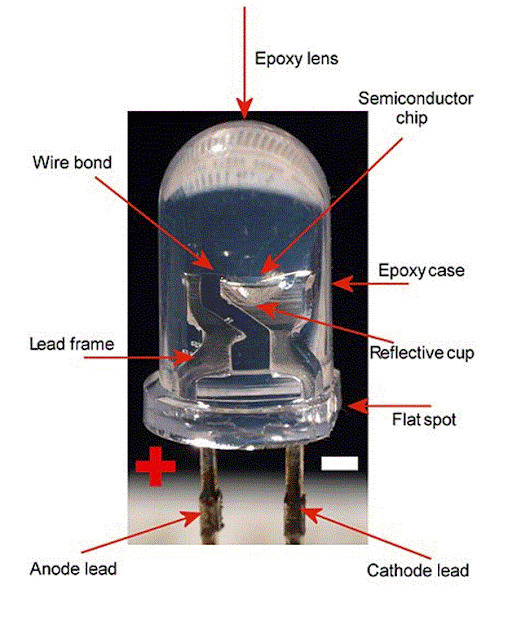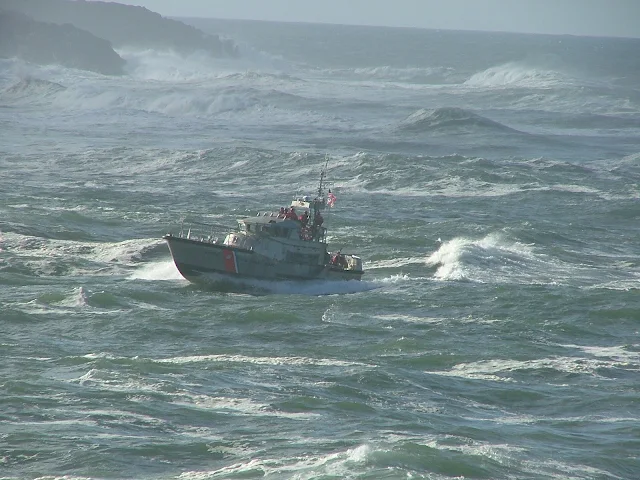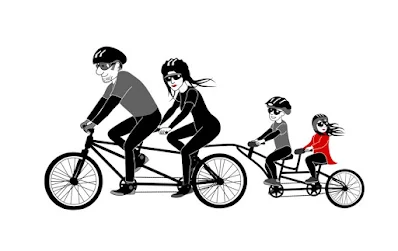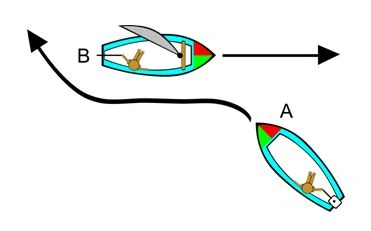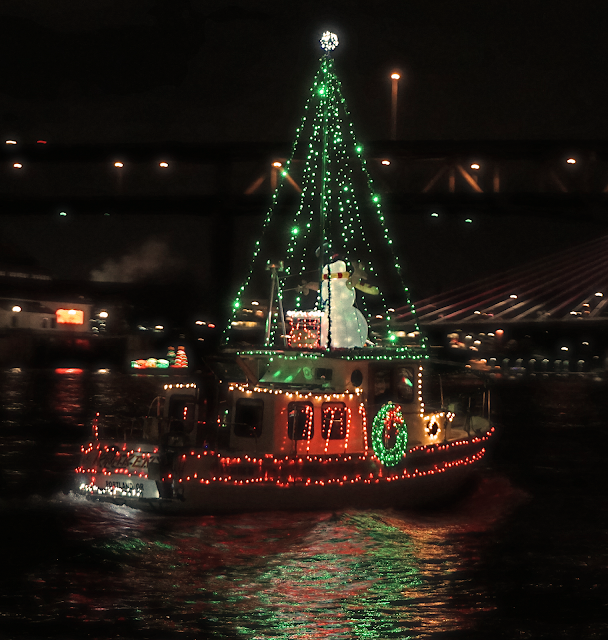 |
Kraken Christmas 2016 |
Explore the San Juan Islands with expert guides, detailed maps, and comprehensive cruising itineraries. Master the tides and currents to your advantage. Discover the best parks for camping, anchoring, and hiking. Experience the charm of Friday Harbor and Roche Harbor, then unwind in a tranquil, secluded cove — the perfect getaway.

use the plus button to zoom in all the way or click street view when enabled.
++++ ============================= All Posts Below
Dec 20, 2016
Nov 14, 2016
San Juan Islands Kayak Campsites and Launch Points - GPS
Campsites and Launch places for kayakers in the
San Juan Islands
Below and on map are campgrounds for kayakers
Black labels below and on MAP - are kayak launch sites - most with parking
Oct 2, 2016
You should ride "San Juan Transit"
It's not too early to be making plans for your next trip to the San Juan's.
Part of making workable plans is knowing what your options are. If all you want to do is sit on your boat in some secluded hideaway, then stop right now.
If on the other hand you think about what new excursions wait you if you just had some way to get around, keep reading.
Did you know that San Juan Transit runs a "Sunset Tour" from Friday Harbor to Lime Kiln? It takes about an hour.
Did you know that you can ride your bicycle to any point they service and then come back on the little bus if you are too tuckered to ride back? 5 bucks, and if it's raining, still 5 bucks.
Here's an idea, I'm going to do. I'm going to start out by riding to American Camp, Then hop the transit over the mountain to English Camp, then ride to Roche and then catch the transit back to Friday Harbor.
San Juan Transit carries bicycles on the front and if they have more they bring them inside.
one way fare is $5, all day is $15, two day is $25.
With a little creative thinking outside the box and free inter-island ferry service, you can get off the boat and expand your horizons. Sit down with a ferry and transit schedule and see what you can come up with. (they are both online)
Daily, May 20th to Oct 6th (2016) - Before waiting for the bus, check the most recent schedule
Lopez Island Transit stops - Weekend service only on Lopez - June 21 to Sept 7
Ferry Landing – Odlin Park – Lopez Farm Cottages – Lopez Village – Golf Course – Shark Reef Park – South End Gen Store – Lopez – School – Hummel Lake – Spencer Spit State Park – Lopez Village Market –
Orcas Island Transit stops - Weekend service only on Orcas -
June 17 to Sept 5
Ferry Landing – West Sound – Turtleback Mtn. Trailhead - Deer Harbor – Golf Course – Eastsound Market – Rosario Resort – Moran St Park –
San Juan Island Transit stops - Daily service, May 20 to Oct 6 (2016)
See spring , summer, and fall schedules
Friday Harbor ferry – American Camp – Lavender Farm – Lime Kiln/Whale Watch St Park – SJ County Park – Snug Harbor Resort – Krystal Acres Alpacas – English Camp – Sculpture Park – Roche Harbor Resort – Lakedale Resort – San Juan Vineyard
Sunset ride from Friday Harbor to Lime kiln and back. Be at the stop 3/4 hour before sunset.
Friday Harbor stop is the little foot passenger island opposite the ferry waiting lanes!
Sep 15, 2016
Fox of the San Juans
Look who we met on the edge of the road while biking from our slip in Friday Harbor to Cattle Point.
This is the sort of chance encounter that makes my day. I don't remember much about that outing but I sure remember how friendly this guy was.
We are on the high bluff overlooking Cattle Point and the Strait of Juan De Fuca with nothing but grassy fields in all directions. This healthy looking guy appeared to be looking for handouts.
 |
| I have never seen a fox that hasn't seen me first and wasn't running for the hills. |
Sep 10, 2016
10+ things To keep on the boat for successful trips in the San Juan's or just to the river.
Over the years I have been impressed by well prepared boaters I meet.
A skipper will offer to lend me a tool or give me a spare part he just happens to have on board.
What really impresses me is when they say "just a second, let me take a look" and they are back in one minute with exactly what I need. I can't find one of my five flashlights let alone a spare 3/8" galvanized shackle in under thirty minutes.
I carry stuff I may need, and of course some of it is never needed, but I never know, so yes, "let me take a look."
Here is my incomplete list of things I keep on the boat all the time, you may have your own ideas.
Not necessarily in order of importance:
- Dramamine seasickness pills or gum.
- take them ahead of time if you suspect a problem
- Extra line or rope.
- You may never need it, but someone else might.
- I carry an old barbeque bag stuffed full of misc. long and short lines.
- Miscellaneous tools.
- Vise grips, adjustable wrench, four way screwdrivers, needle nose pliers, channel locks, wire and rope cutters, knife - more? yes a flashlight
- An oar or paddle for the big boat
- Even a thirty footer may be paddled a short distance.
- A telescoping boat hook.
- A bucket with a strong bail. (lately I have been using those square kitty litter ones cause they fit below deck better)
- Duct tape, cable ties, hose clamps, roll of ss wire. Coffee cup full of nuts bolts screws little things, pencils
- Big sponge, big rag, paint thinner.
- Big magnet with an eye. (this has saved my cookies, big time)
- Mirror
- Basic first aid supplies
- At the very least I bring along bandaids for minor cuts.
- Soft Scrub w/bleach - you need this!
I don't see any reason to make an exhaustive list with things like - an anchor, extra batteries, spare filters, fuel additive, energy bars, pretzels, etc. Those things belong on a different list.
Aug 28, 2016
Let's get some boater input!
Use the comment box below and tell us some things you would like to pass on to fellow boaters.
some examples to get you thinking would be
- don't bother going to ????
- We had a great time at ??
- don't forget to bring ??
Aug 16, 2016
What is the proper way to tie a cleat
Generally, I only use cleats for two things. #1 to quickly secure the boat when coming into a slip or float. #2 to permanently tie the boat.
This may seem like the same two things, but they are not.
When coming into the dock under adverse conditions, the crew may have only a split second to secure the line and move to the next line before the wind or current drags the boat out of reach. Sometimes skippers come in too hot and snagging a wrap on a beefy cleat may be necessary to stop the boat from crashing -- another split second job.
Once the boat is under control, #2 comes into play where I go back and redo my cleating for a permanent job.
The accepted way to cleat a line is as follows:
Run the line under the far horn, around the base, and then around the base under the near horn. Do not double wrap the base. Your line should look like a loop was dropped over the cleat. Next take the line up over the middle of the cleat and around the far horn again, repeating figure eights across the cleat. Finish it off, with one or more half hitches (single twist) on the horn(s).
 |
The reason for not using complete or multiple wraps around the base is so that the extra line cannot ride up during a moment of slack and then pinch tight on itself creating an overwrap that cannot be undone under load. Sailors that have experienced an overwrap on a heavily loaded jib sheet winch will recognize this potentially disastrous situation.
Use up any extra line with more figure eights or lead the line back to the boat, but don't leave a trip hazard across the float.
more on this topic >>>
Jul 13, 2016
What's there to do in Friday Harbor? - How about going to another island, or two, or three - For Free!
 |
| Foot passenger holding area at Friday Harbor (strongly resembles a corral ) |
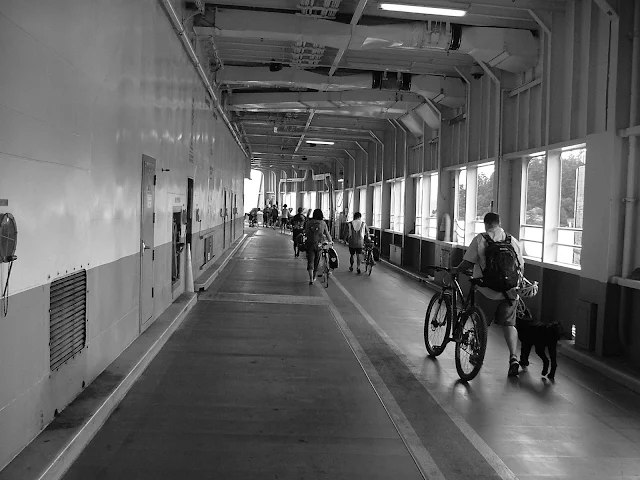 |
| Walking bikes on ferry seemed prudent |
We arrived in Friday Harbor for the 4th of July celebration on the 2nd and so had a few days to kill.
With our floating motel safely tucked into a slip, we rested easy Saturday night. The 26 mile run from Squalicum Harbor in Bellingham was uneventful partly due to catching some decent currents and a sunny rest stop at Blakely's. Sunday morning arrived with coffee, bagels and cream cheese, and then we walked our bikes over to the ferry terminal and caught the 8:30 AM ferry to Shaw Island.
After a stopover on Orcas, the four of us and one Labradoodle walked off at Shaw Landing. The ride is free as is all inter island foot and bicycle traffic, so we simply checked east/west schedules to make sure we had a ride back to Friday that afternoon and headed out with full water bottles and a handful of granola bars.
Second island
The ferry ride was a welcome break from driving our own boat and the view from the high deck is great. On Shaw, we took pity on our four legged member and limited our ride to the county park at Indian Cove, a distance of around four miles round trip. Much further dog trotting I suspect. The road is paved and hugs the water around most of Blind Bay before turning inland at the community center and shooting straight over the small hill to the east side and Indian Cove. The wooded campground was full as expected, and kayaks were strewn about above high water amongst the driftwood. We rested, beach combed, and then headed back to Shaw Landing after about an hour.
(FYI, you can make camping reservations up to 90 days in advance at all three San Juan county parks at https://secure.itinio.com/sanjuan/ or google San Juan County Parks) or try clicking here >>San Juan County Parks (3)
While waiting for our ferry ride back to Friday we sat around the cozy little picnic area eating ice cream purchased at the Shaw Landing General Store. All in all it was a resoundingly relaxing laid back morning.
Getting back to Friday Harbor before 2 PM left us with much of the day still ahead of us, and since they unload foot passengers before the cars, we were back on the promenade minutes after the ramp went down.
read more >> clickety click
Jul 10, 2016
King Tides and Minus Tides
High and low tides are a fundamental part of life in the San Juan Islands and beyond.
They occur in a predictable pattern, much like night follows day. However, a few times each year, the alignment of the sun and moon causes extreme tidal conditions known as king tides and minus tides.
As the names suggest, these tides are significantly higher or lower than normal.
When we study a NOAA tide forecast for a specific location, we typically see times and heights such as 7.5 feet at 9:04 am, followed by a low tide of 2.5 feet at 3:02 pm, approximately six hours later. By doing some simple math, we can see that the tide will fall (range) five feet between high and low tide. This is our usual scenario, although the times shift by about fifty-four minutes later each day.
However, as the sun and moon's positions approach perfect alignment, the tides become more pronounced, resulting in king tides and minus tides.
For instance, a high tide might reach +10.5 feet, while a low tide might drop to -3 feet, creating a nearly 14-foot range over a six-hour period. These figures are not hypothetical; they were taken directly from the NOAA website for Fisherman Bay
 |
| Minus tide in July at Jones Island leaves an unwary runabout high and dry delaying departure. |
For a cruiser in the San Juans, considering where and how you anchor or tie to a float becomes even more important during these extreme tides.
Your favorite dock might be sitting in the weeds at low tide, or your anchor rode might be too short at high tide. Careful planning of your passage becomes crucial. A pass or headland you routinely transit might have five-foot or higher standing waves and an eight+ mph current during these times.
Familiarizing yourself with the "rule of twelfths"
rule of twelfth's is a useful way to prepare for and estimate water levels at your chosen anchorage. Knowing the depth in advance won't make your boat any faster, but it could help you adjust your plans to avoid the worst of the conditions.
All cruising requires vigilance and preparation but during king and minus tides, a little extra knowledge will assure you have a safe passage.
Jun 13, 2016
LED lights and old boats - lumens - color - watts ?
Led light pitfalls!
I am straying into boating topics and away from Sailing the San Juan's type posts because so much of what we do is prepare for what we do.
Last summer we were stranded at Jones Island with dead batteries. see dead battery pain in the ### trip A number of reasons contributed to our predicament, but mostly I simply used up all my available juice. Led's, everyone knows are the new answer to hungry power consuming home lights and are mandated by the rule makers to be incorporated into our lives. It makes perfect sense to use them in our boats where power is limited to what's stored in your battery.
Led lights for boats are mostly modifications of rv and automobile lights because our systems are 12 volts like cars. New fixtures designed specifically to use led bulbs are coming out every day but who wants to switch out expensive fixtures for even more expensive fixtures.
The answer for some of us is to simply switch bulbs, and that is when my problems began.
I went online and a few days later my expensive led bulbs showed up.
- my first problem - the new led bulb was an irritatingly bright bluish white that made my wife's skin look alien.
- solution - order another bulb and pay attention to color, cool white, warm white, kelvin etc. Now I know that around 2700 color is pleasing and 6500 is not. (16 boat bucks wasted)
- next problem - brightness or lumens of 25-75 add to ambience under a counter or stair, but won't light up the table or cooking area
- solution - buy bulbs with over 200 lumens (I think this would be about 2 watts) and make sure they are close to area to be lit up.
- final problem - replacement bulbs are primarily configured for tail light and turn signal applications and not area lighting. Some led's are arranged on a cylinder, some on a card, and all the little buggers seem to be directional, some with a narrow beam.
- solution - none in my case except buy new fixtures, with the correct bulb included.
- final, final issue - automobile fixtures use the steel body for a ground, but boats being mostly fiberglass use fixtures with two wires, and sometimes bulbs with a ground terminal (not the brass base) so you must be sure to look at the bulb base terminals and match properly.
My boat has four different types/styles of interior lighting fixtures, after a generous amount of research I have come to the conclusion that there is simply not a suitable led bulb replacement made for some of them. Without changing fixtures, I will have to put up with what's out there.
The good news is, I have lots of company, prices are coming down and new products are invented almost daily.
BTW, I just installed a new 120 lb 4d house battery rated at a whopping1645 amps and I am looking forward to hanging at Jones Island July 5-6 this year. I hope to see you there, I'll be the one doing nothing.
Jun 8, 2016
Wind Versus Current and Predicting Conditions in the San Juan's
Fortunately we don't have much bad weather or rough water during the summer, but things kick up a little when the wind blows against the current.
The current changes direction every six hours, so with a steady wind, conditions on the water may change from smooth to stacked waves and back to smooth making crossing straits or rounding the tip of points very uncomfortable. Some of the currents slam into each other making things worse at the lee side of islands.
When the weatherman says a "north wind" he means the wind is coming from the north and blowing south. Not confusing ! - but when when they say a "north current" they mean the current is flowing north - (opposites attract waves) Simple to understand?
Take a moment and click on this link to view current Rosario Strait conditions as forecast by Noaa
click here to see Rosario Strait forecast (this is the same handy dandy link on left side of page) The forecast predicts weather and waves and has a handy radar view, plus you can change the target area simply by clicking on the map.
So! - a north wind and a north current are not good if they are at the same time and place, ditto for south wind and south current, east against east, west against west.
When making plans, check the current and wind direction, remembering at slack water there may be no waves, and then as the current speeds up, the waves stack up. And then six hours or less later when the current reaches slack again, the waves go back down.
In the San Juan's, currents flow around islands and land points, and winds blow willy nilly around land masses. This means you may find localized rough conditions where waves are stacking due to north versus north , south versus south etc. The good news is that many times these rough spots can be avoided simply by giving extra clearance when rounding points. The straits and passes though may require you to time your passage to avoid opposing forces. (north versus north, south versus south.)
The southeast tip of Lopez Island at Point Colville and Davidson rock is a good example where conditions often are atrocious and to be avoided.
Remember you can always turn around or wait an hour or two if you are overwhelmed. Simply changing course a little may ease the ride. Don't let your schedule or itinerary dictate your decisions.
May 21, 2016
Is the Best Vacation Destination in the San Juan Islands Friday Harbor?
OK, let's get serious, the best vacation destination will offer great value and astounding memories. True!
So having a orca breach just a few feet from your dinghy fits the description - right again!
So does a romantic sunset dinner in a deserted anchorage, discovering a tiny octopus in a tidepool, or having a lost seal pup crying at your transom. But if history fascinates you and killer whales terrify you, perhaps a museum should be on your short list.
 |
| Friday Harbor Marina |
If you are visiting the San Juans by car, by boat, or on foot and only have one place to choose for your stop, make it the city of Friday Harbor on San Juan Island.
If at all possible you should allow a full day for exploring and then spend the night on board your boat at the marina or at a local tourist lodge, B&B or motel. For campers, head for the county campground at Smallpox Bay on the west side.
Ride your bicycle, drive your car, or purchase an all day transit pass for $15. Friday Harbor and San Juan Island is your number one choice.
While on San Juan Island, stop by the visitors center in Friday Harbor for maps and brochures. ( it's on Spring street across from Kings Market) Check out the Whale Museum,the San Juan Historical Museum, American Camp, English camp, Lime Kiln State Park (aka "Whale Watch Park")and a host of private enterprises and artsy craftsy studios, but don't miss Roche Harbor, and the Sculpture Garden at Westcott Bay Reserve. Local shops and eateries will satisfy your appetite for cuisine and collectables.
read more >>> clickety click
Apr 28, 2016
Bicycling Shaw Island in the San Juans
Even though I espouse "Just Get Going" type San Juan trips, I still do a little research from time to time.
A few years back, I stopped at Shaw Landing. (That's the little float and market next to the Shaw ferry landing at the entrance to Blind Bay) We got some snacks and while there inquired about coming back in a day or two and leaving the boat at the dock while we explored the island on our bicycles.
We were not told straight out yes or no, they said something about docks being for paid overnighters and to check back later. I decided not to come back and we went to Lopez. There's more >>>
Apr 26, 2016
False Creek in Vancouver - it's a great cruise destination
I know, I know, Vancouver is not the San Juans, but it is definitely in the area. We had such a fantastic experience I felt everyone should hear about it.
Sooner or later, we get tired of going to the same great places and Canada is the answer if you are in the San Juan's.
At sixty miles from Squalicum Harbor, Vancouver is one day's drive away for powerboats and two days for pokey sailboats.
With an overnight stop at Sucia or Patos Island, you can break the mileage down to a thirty-six-mile jaunt, and have time to explore after you get anchored in Vancouver.
Your destination is False Creek in NW Vancouver.
For those of you going for your charts to find False Creek, it is a dead end bay off the end of English Bay in Burrard Inlet.
If you already know Vancouver -- False Creek surrounds Granville Island Peninsula and shopping district.
One last little hint -- False Creek and English Bay form one side of Stanley Park. (That's right, the Lions Gate suspension bridge Stanley Park)
Now that you are properly oriented, let's cut to the details. Stanley Park trails and the False Creek shoreline promenade provide almost unlimited level bicycling. Granville Island is like a giant Saturday Market, only with permanent buildings. You could spend a week here and just get started. The surrounding high rise condos are some of the most expensive property around, and you can drop your anchor and spend the night in front of them for free.
 |
Free 3 hr slips and dock space at Granville Island Mall make getting dinner and souvenirs easy. |
The city welcomes transient boaters and even has a welcome committee boat (at the dock under the Granville Island bridge) stuffed with brochures and knowledgeable ambassadors.
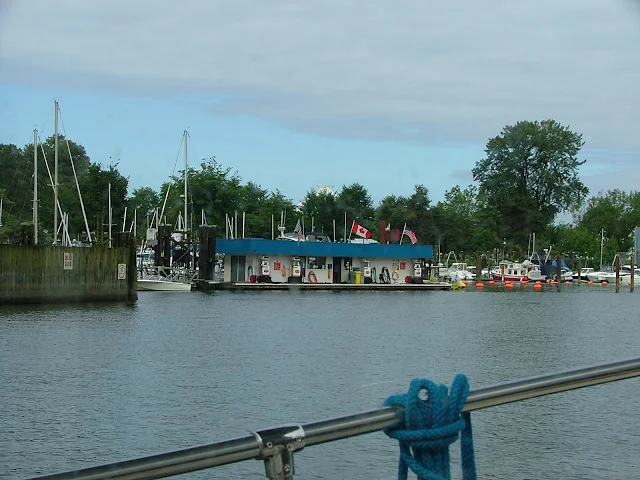 |
| Of course there is a fuel dock, and paying by the liter sounds cheap at first. |
When you arrive in False Creek simply get on your phone and call the 800 number to check in with customs and immigration, it's that easy.
If you don't want to anchor, there are plenty of marinas and yachts clubs willing to take your money or extend reciprocal privileges.
 |
| False Creek is big enough to go dinghy sailing and the entire inlet is a no-wake zone. |
Vancouver is on our short list for a return visit!
Did I mention everyone is friendly?
If you need more cruising to round out your trip, consider running around the point Stanley Park occupies and scoot under Lions Gate bridge up Burrard inlet. You might even run the eighteen or so miles up to Indian Arm Provincial Park. Go to ActiveCaptain "live map" to check out the possibilities.
Apr 12, 2016
To help or not to help? - boaters assisting other boaters - basic docking tips are common sense
In the San Juan's, you will either #1, already be at the dock with your boat, or #2, coming at the dock with your boat. All the other skippers are in the same situation.
The runabout or daysailer or forty footer all have windage and current issues, and when it is crunch time, things happen fast.
The driver of the smallest vessel may have decades of experience, and the person with the largest yacht may be a newbie over his head in bells and whistles. In all cases the considerate proper boater will get out there and be helpful when a fellow boater is coming in.
Here are some basic tips some of us use when docking:
- Explain to your crew ahead of time exactly what you are doing, and what you expect them to do.
- Prepare your fenders, dock lines, and boat hook ahead of time.
- Sometimes it is wise to drive up and make a full stop out a ways to judge the wind and current.
- Put on PFDs - at the dock is where most drownings occur.
- Having a plan also includes an abort action should things go awry.
- If someone is on the dock offering to help --- hand them a rope.
- When the next boat arrives, get out there and be helpful.
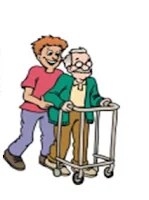 |

Nice boat gramps, need a hand?
Mar 8, 2016
Where are the Public Boat Ramps in the San Juans - just the basics to get your boat in the water
Buried in this website are itineraries, helpful hints and everything you need to get going to the San Juans.
And that's the problem, it's buried.
Some of us don't need anything but to be pointed to the boat ramp.
This post points the way.
BOAT RAMPS TO THE SAN JUANS << hot link, clickety click!
Should you take your boat trailer on the ferry and get off somewhere?
NO! - I don't recommend it unless you are going to a resort that has a ramp and you plan to rent a cabin -- plan on spending substantial time waiting in ferry lines. Be forewarned, some so-called local ramps are simply sandy beaches with no docks. Plus the ferry rates for trailers - ouch.
If you carry kayaks on the roof, riding a ferry makes good sense.
My #1 suggestion for kayakers that don't want to paddle across Rosario Strait -- go to Deer Harbor on Orcas Island, park your car and paddle two miles to Jones Island for a night or two camping.
Let's say you carry a kayak on the roof or trailer a day-sailer and plan on camping on shore, and you don't want to deal with ferries - do this.
Drive to Washington Park in Anacortes, (campground and ramp) set up your camp, splash your boat and sail or paddle to either Pelican Beach on Cypress or Saddlebag Island. Spend the night or come back each evening. Using the currents, you can avoid difficult paddling or fluky sailing if that's what works for you.
Hint, use the search box and search Saddlebag or Cypress or Pelican Beach or Deer Harbor, or Jones.
%2Bfor%2Bthe%2BSan%2BJuans-1.JPG) |
| Public ramps with floats and parking open 24/7 |
Mar 7, 2016
What size boat is best in the San Juans? Bigger Boats - Smaller? Anything Goes
The difference in expense, crew requirements, and comfort are obvious, and if you drill down into the pros and cons of mega versus micro, each skipper will have a laundry list rationalizing and
justifying their choices.
Sometimes I see micro yachts being paddled or sailed across straits and marvel at them just as much if not more than the mega bruisers with the eight foot freeboard.
In the end, the boats we use in the San Juans are the ones we have, it's as simple as that. It's not a matter of what is appropriate or proper, it's a matter of making proper choices for the conditions, and your boat's ability to handle those conditions.
From a 14 foot open fishing boat, kayak or canoe, to the Queen Mary, all have a time and place in the San Juans.
The boats in the pictures below are likely to be found just about everywhere.
So if it floats -- get going.
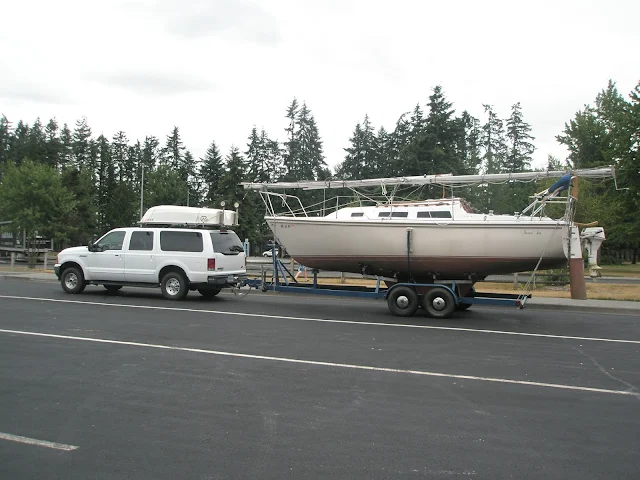 |
| Everything but the kitchen sink |
 |
| And the kitchen sink |
 |
| Too big to fit in picture (please remove shoes!) |
 |
| Runabouts - ski boats - open boats Common at Jones Island |
 |
| Mega yacht won't be using any of the park facilities. These guys anchor out and dinghy into the coves and floats See the tender on top? |
 |
| Another camper on a runabout |
 |
| They may be using tents onshore at one of three campgrounds on James Island, or just a lunch stop. |
 |
| Kayak campers use campground at top of steps |
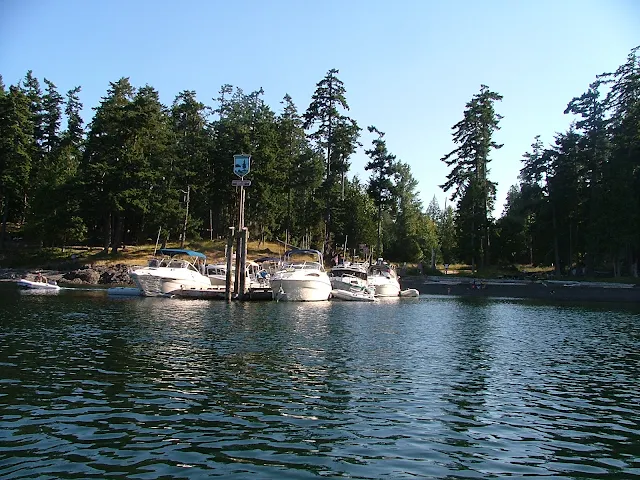 |
| At Jones Island, its a full float of day-trippers. |
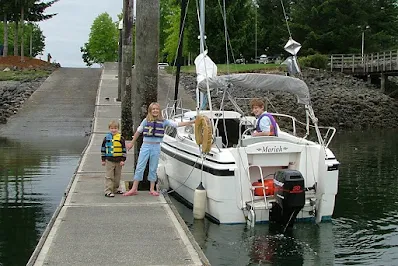 |
| This trailer sailer just rolled down the ramp |
 |
| becalmed in a car-topper in Lopez Sound |
 |
| This boater paddles the final feet to Pelican Beach |
Click below to see satellite view of Obstruction Island
Mar 4, 2016
Smart Boaters Follow Rules
Many of the rules we follow are based upon sound reason. Sometimes a rule is put in place after tragedy strikes in an effort to make sure it never happens again.
It is impossible to personally experience and learn from every accident scenario so we must rely on others to come up with guidelines for us to follow.
This is why we are required to carry a pfd for everyone on board. This is why we carry fire extinguishers.
Rest assured though, even when all the rules are followed, there are still plenty of dumb things you can do to potentially maim or kill your friends and family, or complete strangers.
The url below is for the Washington boating rules on the State Parks web site.
http://parks.state.wa.us/435/Boating
Feb 25, 2016
I Broke My Favorite Anchor
I use a folding grappling hook type anchor for my secondary anchor. I usually heave it off the stern, or paddle it out with the dinghy, and set it by pulling the primary in, shortening scope.
Anyway, last week I was helping out at a Boy Scout Eagle project, and we were pulling some small shrubbery stumps, and I got the great idea to use my anchor to hook onto the stumps and snap, I broke the cast iron shank right at the base. (No, I wasn't pulling stumps with my boat, that would be weird)
So now I'm short my favorite anchor, but more importantly, how much should an anchor hold and should it break? I didn't think I was pulling that hard on the stump, it seemed to break with little effort.
I'm wondering, of all the times I have anchored using the same folding anchor, how close was I to snapping the shank and coming unhooked.
I would prefer that things bend and not break when overloaded, is that too much to expect?
I don't know the answer, but I'm going to take a good look at all my gear, especially things made of cast parts.
 |
| The shank broke under the locking bell. (btw, I fixed it but I don't trust it anymore) |
Click below to see Roche Harbor








